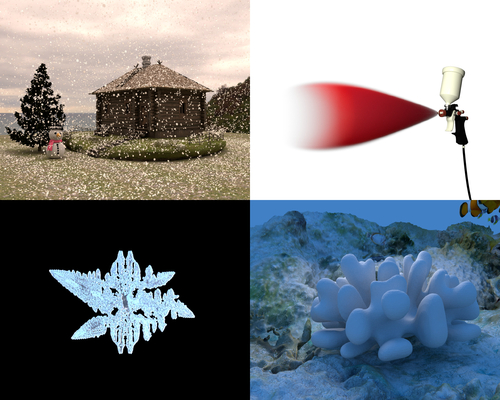Pre-recorded Sessions: From 4 December 2020 | Live Sessions: 10 – 13 December 2020
4 – 13 December 2020
Pre-recorded Sessions: From 4 December 2020 | Live Sessions: 10 – 13 December 2020
4 – 13 December 2020
#SIGGRAPHAsia | #SIGGRAPHAsia2020
#SIGGRAPHAsia | #SIGGRAPHAsia2020











Date/Time:
04 – 13 December 2020
All presentations are available in the virtual platform on-demand.
Lecturer(s):
Tao Xue, Rutgers University, United States of America
Haozhe Su, Rutgers University, United States of America
Chengguizi Han, Rutgers University, United States of America
Chenfanfu Jiang, University of Pennsylvania, United States of America
Mridul Aanjaneya, Rutgers University, United States of America
Bio:
Description: We introduce the C-F diffusion model [Anderson and Tamma 2006; Xue et al. 2018] to computer graphics for diffusion-driven problems that has several attractive properties: (a) it fundamentally explains diffusion from the perspective of the non-equilibrium statistical mechanical Boltzmann Transport Equation, (b) it allows for a finite propagation speed for diffusion, in contrast to the widely employed Fick's/Fourier's law, and (c) it can capture some of the most characteristic visual aspects of diffusion-driven physics, such as hydrogel swelling, limited diffusive domain for smoke flow, snowflake and dendrite formation, that span from Fourier-type to non-Fourier-type diffusive phenomena. We propose a unified convection-diffusion formulation using this model that treats both the diffusive quantity and its associated flux as the primary unknowns, and that recovers the traditional Fourier-type diffusion as a limiting case. We design a novel semi-implicit discretization for this formulation on staggered MAC grids and a geometric Multigrid-preconditioned Conjugate Gradients solver for efficient numerical solution. To highlight the efficacy of our method, we demonstrate end-to-end examples of elastic porous media simulated with the Material Point Method (MPM), and diffusion-driven Eulerian incompressible fluids.
